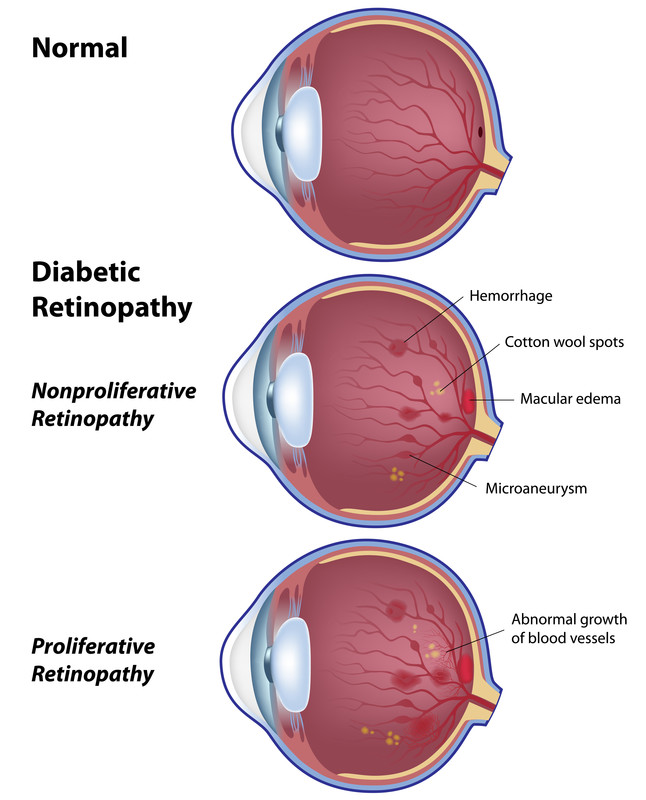
Diabetic Retinopathy
Diabetic retinopathy (DR) is a common complication of diabetes. It is characterized by progressive damage to the blood vessels of the retina, the light-sensitive tissue at the back of the eye that is necessary for good vision. DR progresses through four stages, mild nonproliferative retinopathy (microaneurysms), moderate nonproliferative retinopathy (blockage in some retinal vessels), severe nonproliferative retinopathy (more vessels are blocked leading to deprived retina from blood supply leading to growing new blood vessels), and proliferative retinopathy (most advanced stage). Diabetic retinopathy usually affects both eyes.
It is the leading cause of blindness among U.S. working-aged adults aged 20–74 years. An estimated 4.1 million and 899,000 Americans are affected by retinopathy and vision-threatening retinopathy, respectively.
Early detection of retinopathy depends on educating patients with diabetes as well as their families, friends, and health care providers about the importance of regular eye examination even though the patient may be asymptomatic. Patients must be informed that they may have good vision and no ocular symptoms, yet may still have significant disease that needs treatment, which depends on timely intervention. However, as many as 50% of patients are not getting their eyes examined or are diagnosed too late for treatment to be effective.
The care process for diabetic retinopathy includes a medical history, an ophthalmic examination and screening of high quality retinal photographs of patients who have not had previous treatment for diabetic retinopathy, and vigilant follow-up. An effective screening program can determine who needs referral to an ophthalmologist for close follow-up and possible treatment, and who simply requires annual screening.
Referral to an ophthalmologist is required when there is any non-proliferative diabetic retinopathy, proliferative diabetic retinopathy (PDR), or macular edema. Ophthalmologists should communicate the ophthalmologic findings and level of retinopathy with the primary care physician as well as the need for optimizing metabolic control. It is reasonable to encourage patients with diabetes to be as compliant as possible with therapy of all medical aspects of their disease.
Source: Centers for Disease Control and Prevention, American Academy of Ophthalmology
